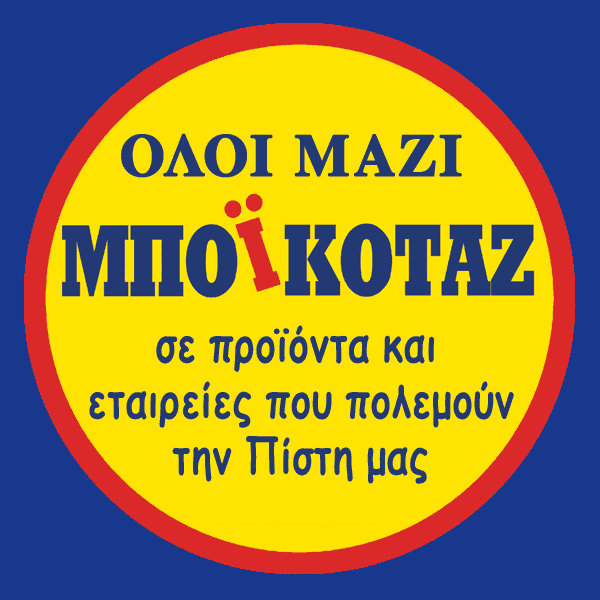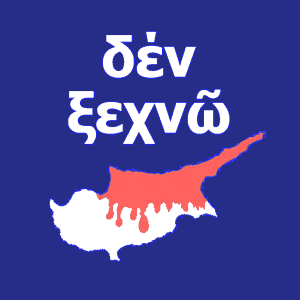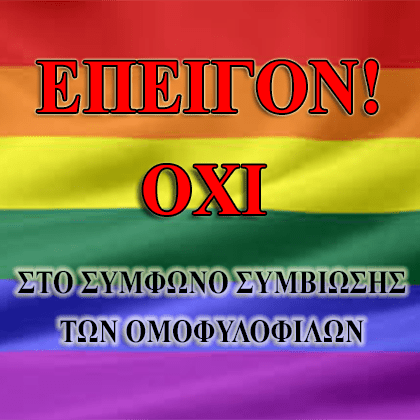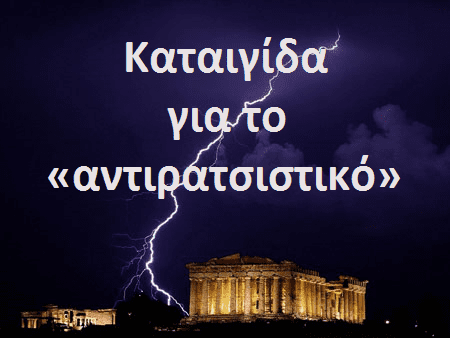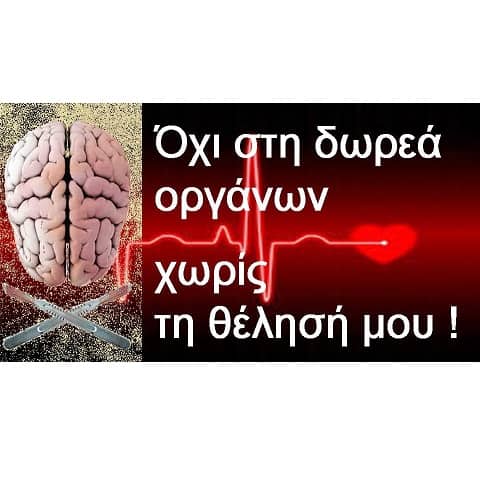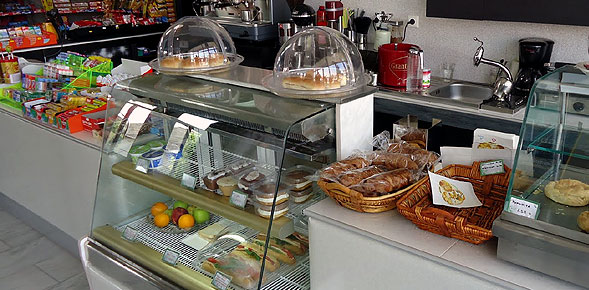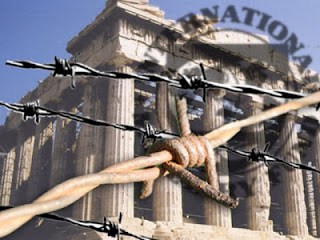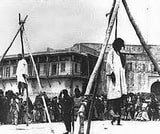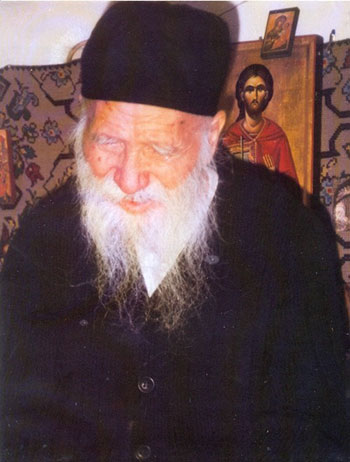
His family
At baptism he was given the name Evangel’s. He was the fourth of five children, and the third child of the four that survived. His oldest sister, Vassiliki, passed away when she was a year old. Today, only his youngest sister, who is a nun, is still alive.
His father had a monastic calling but obviously did not become a monk. He was, however, the village cantor, and St. Nectarios called upon his services during his journeys through the area, but poverty forced him to emigrate to America to work on the construction of the Panama canal.
His childhood years
The Elder attended the school in his village for only two years. The teacher was sick most of the time and the children didn’t learn much. Seeing the way things were, Evangelos left school, worked on the family farm and tended the few animals that they owned. He started working from the age of eight. Even though he was still very young, in order to make more money, he went to work in a coal mine. He later worked in a grocer’s store in Halkhida and in Piraeus.
His father had taught him the Supplicatory Canon (Paraklisis) to the Mother of God (Panagia); and whatever else of our faith he could. As a child he developed quickly. He himself told us that he was eight years old when he first started shaving. He looked much older than he actually was. From his childhood he was very serious, industrious and diligent.
Monastic calling
While he was looking after the sheep, and even when working in the grocer’s store, he slowly read the life story of St. John the Hut-dweller. He wanted to follow the example of the saint. So he set off for Mt. Athos many times, but for various reasons he never made it and returned home. Finally, when he was about fourteen or fifteen years of age, he again left for Mt. Athos. This time he was determined to make it and this time he did.
The Lord, who watches over the destinies of us all. brought about things in such a way that Evangelos met his future spiritual father, the hieromonk Panteleimon, while he was on the boat between Thessaloniki and the Holy Mountain Father Panteleimon immediately took the young boy under his wing. Evangelos was not yet an adult, and so should not have been allowed on the Holy Mountain. Fr. Panteleimon said he was his nephew and his entrance was assured.
The monastic life
His elder, Fr. Panteleimon, took him to Kavsokalyvia to the Hut of St. George. Fr. Panteleimon lived there with his half- brother Fr. Ioannikios. The well-known monk, the blessed Hatzigeorgios had once lived there too.
In this way, Elder Porphyrios acquired two spiritual fathers at the same time. He gladly gave absolute obedience to both of them. He embraced the monastic life with great zeal. His only complaint was that his elders didn’t demand enough of him. He told us very little about his ascetic struggles and we have few details. From what he very rarely said to his spiritual children about it, we can conclude that he happily and continuously struggled hard. He would walk barefoot among the rocky and snowy paths of the Holy Mountain. He slept very little, and then with only one blanket nd on the floor of the hut, even keeping the window open when it was snowing. During the night he would make many prostrations, stripping himself to the waist so that sleep would not overcome him. He worked; wood-carving or outside cutting down trees, gathering snails or carrying sacks of earth on his back for long distances, so that a garden could be created on the rocky terrain near the Hut of St. George.
He also immersed himself in the prayers, services and hymns of the Church, learning them by heart while working with his hands. Eventually from the continual repetition of the Gospel and from learning it by heart the same way, he was unable to have thoughts that were not good or that were idle. He characterized himself, in those years, as being “forever on the move.”
However, the distinguishing mark of his ascetic struggle was not the physical effort he made, but rather, his total obedience to his elder. He was completely dependent upon him. His will disappeared into his elder’s will. He had total love, faith and devotion for his elder. He identified himself completely with him, making his elder’s conduct in life his own conduct. It is here that we find the essence of it all. It is here, in his obedience that we discover the secret, the key to his life.
This uneducated boy from the second grade, using the Holy Scriptures as his dictionary, was able to educate himself. By reading about his beloved Christ he managed in only a few years to learn as much as, if not more than, we ever did with all our comforts. We had schools and universities, teachers and books, but we did not have the fiery enthusiasm of this young novice.
We do not know exactly when but certainly not long after reaching the Holy Mountain, he was tonsured as a monk and given the name Nikitas.
The visitation of divine grace
We should not find it strange that divine grace should rest upon this young monk who was filled with fire for Christ and gave everything for His love. He never once considered all his labors and struggles.
It was still dawn, and the main church of Kavsokalyvia was locked. Nikitas, however, was standing in the corner of the church entrance waiting for the bells to ring and the doors to be opened.
He was followed by the old monk Dimas, a former Russian officer, over ninety years old, an ascetic and a secret saint. Fr. Dimas looked around and made sure that nobody was there. He didn’t notice young Nikitas waiting in the entrance. He started making full prostrations and praying before the closed church doors.
Divine grace spilled over from holy Fr. Dimas and cascaded down upon the young monk Nikitas who was then ready to receive it. His feelings were indescribable. On his way back to the hut, after receiving Holy Communion in the Divine Liturgy that morning, his feelings were so intense that he stopped, stretched out his hands and shouted loudly “Glory to You, Ο God! Glory to You, Ο God! Glory to You, Ο God!”
The change wrought by the Holy Spirit
Following the visitation of the Holy Spirit, a fundamental change took place in the psychosomatic makeup of young Monk Nikitas. It was the change that comes directly from the right hand of God. He acquired supernatural gifts and was vested with power from on high.
The first sign of these gifts was when his elders were returning from a far-away journey, he was able to “see” them at a great distance. He “saw” them there, where they were, even though they were not within human sight. He confessed this to Fr. Panteleimon who advised him to be very cautious about his gift and to tell no-one. Advice which he followed very carefully until he was told to do otherwise.
More followed. His sensitivity to things around him became very acute and his human capacities developed to their fullest. He listened to and recognized bird and animal voices to the extent that he knew not just where they came from, but what they were saying. His sense of smell was developed to such a degree that he could recognize fragrances at a great distance. He knew the different types of aroma and their makeup. After humble prayer he was able to “see” the depths of the earth and the far reaches of space. He could see through water and through rock formations. He could see petroleum deposits, radioactivity, ancient and buried monuments, hidden graves, crevices in the depths of the earth, subterranean springs, lost icons, scenes of events that had taken place centuries before, prayers that had been lifted up in the past, good and evil spirits, the human soul itself, just about everything. He tasted the quality of water in the depths of the earth. He would question the rocks and they would tell him about the spiritual struggles of ascetics who went before him. He looked at people and was able to heal. He touched people and he made them well. He prayed and his prayer became reality. However, he never knowingly tried to use these gifts from God to benefit himself. He never asked for his own ailments to be healed. He never tried to get personal gain from the knowledge extended to him by divine grace.
Everytime he used his gift of discernment, (diakrisis) the hidden thoughts of the human mind were revealed to him. He was able, through the grace of God, to see the past, the present and the future all at the same time. He confirmed that God is all-knowing and all-powerful. He was able to observe and touch all creation, from the edges of the Universe to the depth of the human soul and history. St. Paul’s phrase One and the same Spirit works all these things, distributing to each one individually as He wills” (1. Cor. 12:11) certainly held true for Elder Porphyrios. Naturally, he was a human being, and received divine grace, which comes from God. This God who for reasons of His own sometimes did not reveal everything. Life lived in grace is an unknown mystery for us. Any more talk on the matter would be a rude invasion into matters we don’t understand. The Elder always pointed this out to all those who attributed his abilities to something other than grace. He underlined this fact, again and again, saying “It’s not something that’s learnt. It’s not a skill. It is GRACE.”
Return to the world
Even after being overshadowed by divine grace, this young disciple of the Lord continued in his ascetic struggles as before, with humility, godly zeal and unprecedented love of learning. The Lord now wanted to make him a teacher and shepherd of His rational sheep. He tried him out, measured him up, and found him adequate.
Monk Nikitas never but never thought of leaving the Holy Mountain and returning to the world. His divine all- consuming love for our Savior drove him to wish and to dream of finding himself in the open desert and, except for his sweet Jesus, completely alone.
However, severe pleurisy, finding him worn down from his superhuman ascetic struggles, caught hold of him while he was gathering snails on the rocky cliffs. This forced his elders to order him to take up residence in a monastery in the world, so that he could become well again. He obeyed and returned to the world, but as soon as he recovered he went back to the place of his repentance. He again fell ill; this time his elders, with a great deal of sadness, sent him back into the world for good.
Thus, at nineteen years of age, we find him living as a monk at the Monastery Lefkon of St. Charalambos, close to his birthplace. Nevertheless he continued with the regime he had learnt on the Holy Mountain, his psalms and the like. He was, however, forced to scale down his fasting until his health got better.
Ordination to the Priesthood
It was in this monastery that he met the Archbishop of Sinai, Porphyrios III, a visiting guest there. From his conversation with Nikitas, he noticed the virtue and the divine gifts that he possessed. He was so impressed that on the 26th of July 1927, the feast of St. Paraskevi, he ordained him a deacon. The very next day, the feast of St. Panteleimon, he promoted him to the priesthood, as a member of the Sinaite Monastery. He was given the name Porphyrios. The ordination took place in the Chapel of the Holy Metropolis of Karystia, in the Diocese of Kymi. The Metropolitan of Karystia, Panteleimon Phostinis also took part in the service. Elder Porphyrios was only twenty-one years old.
The Spiritual Father
After this the resident Metropolitan of Karystia, Panteleimon appointed him with an official letter of warrant to be a father confessor. He carried out this new “talent” that was given him with humanity and hard work. He studied the “Confessor’s Handbook.” However, when he tried to follow to the letter what it said regarding penance, he was troubled. He realized that he had to handle each of the faithful individually. He found the answer in the writings of St. Basil, who advised, “We write all these things so that you can taste the fruits of repentance. We do not consider the time it takes, but we take note of the manner of repentance.” (Ep. 217 no. 84) He took this advice to heart and put it into practice. Even in his ripe old age he reminded young father confessors of this advice.
Having matured in this way the young hieromonk Porphyrios, by God’s grace, applied himself successfully, to the work of spiritual father in Evia until 1940. He would receive large numbers of the faithful for confession, every day. On many occasions he would hear confession for hours without a break. His reputation as a spiritual father, knower of souls, and sure guide, quickly spread throughout the neighboring area. This meant that many people flocked to his confessional at the Holy Monastery of Lefkon, close to Avlonarion, Evia.
Sometimes whole days and nights would pass by with no letup and no rest, as he fulfilled this godly work, this sacrament. He would help those who came to him with his gift of discernment, guiding them to self-knowledge, truthful confession and the life in Christ. With this same gift he uncovered snares of the devil, saving souls from his evil traps and devices.
Archimandrite
In 1938 he was awarded the office of Archimandrite from the Metropolitan of Karystia, “in honor of the service that you have given to the Church as a Spiritual Father until now, and for the virtuous hopes our Holy Church cherishes for you” (protocol no. 92/10-2-1938) as written by the Metropolitan. The hopes of whom, by the grace of God, were realized.
Priest, for a short time to the parish of Tsakayi, Evia and to the Monastery of St. Nicholas of Ano Vathia
He was assigned by the resident Metropolitan as a priest to the village of Tsakayi, Evia. Some of the older villagers, to this day, cherish fond memories of his presence there. He had left the Holy Monastery of St. Charalambos because it had been turned into a convent. So, around 1938 we find him living in the ruined and abandoned Holy Monastery of St. Nicholas, Ano Vathia, Evia, in the jurisdiction of the Metropolitan of Halkhida.
In the desert of the city
When the turmoil of the Second World War approached Greece, the Lord enlisted His obedient servant, Porphyrios, assigning him to a new post, closer to his embattled people. On the 12th of October 1940 he was given the duty of temporary priest to the Chapel of St. Gerasimos in the Athens Polyclinic, which can be found on the corner of Socrates and Pireaus Street, close to Omonia Square. He himself requested the position out of the compassionate love had for his fellows who were suffering. He wanted to be them during the most difficult times in their lives, when illness, pain and the shadow of death showed the hopelessness of all other hope except for hope in Christ.
There were other applicants with excellent credentials who were also interested in the post, but the Lord enlightened the director of the Polyclinic. Humble and charming, Porphyrios, who was uneducated according to the standards of the world but wise according to God, was chosen. The person who made this choice later expressed his amazement and joy in finding a true priest saying, “I found a perfect father, just like Christ wants.”
He served the Polyclinic as its employed chaplain, for thirty whole years and then in order to be of service to his spiritual children who sought him there, voluntarily, for a further three years.
Here as well as the role of chaplain, which he carried out with complete love and devotion, celebrating the services with wonderful devotion; confessing, admonishing, healing souls and many times bodily ailments too, he also acted as spiritual father to as many of those that came to him.
“Yes, you yourselves know that these hands were provided for my necessities and for those who were with me.” (Acts 20:34)
Elder Porphyrios, with his lack of academic qualifications, agreed to be chaplain of the Polyclinic for a salary of next to nothing. It was not enough to support himself, his parents and the few other close relatives who relied on him. He had to work for a living. He organized in succession, a poultry farm and then a weaving-shop. In his zeal for services to be celebrated in the most uplifting manner, he applied himself to the composition of aromatic substances which could then be used in the preparation of the incense used in divine worship. In fact in the 1970’s he made an original discovery. He combined charcoal with aromatic essences, now censing the church with his own slow-burning charcoal that gave off a sweet fragrance of spirituality. He never, it seems, revealed the details of this discovery.
From 1955 he leased the small monastery of St. Nicholas, Kallisia, which belongs to the Holy Monastery of Pendeli. He systematically cultivated the land around it. putting in a lot of hard work. It was here that he wanted to establish the convent, which he eventually built elsewhere. He improved the wells, built an irrigation system, planted trees, and tilled the soil with a digging machine that he worked himself. All this together with duty, twenty-four hours a day, as chaplain and confessor.
He valued work highly and would allow himself no rest. He learnt from experience the words of abba Isaac the Syrian, “God and his angels find joy in necessity; the devil and his workers find joy in idleness.”
Departure from the Polyclinic
On the 16th March 1970, having completed thirty-five years of service as a priest, he received a small pension from the Hellenic Clerical Insurance Fund and left his duties at the Polyclinic. In essence, however, he remained until his replacement arrived. Even after that he continued to visit the Polyclinic to meet his great number of spiritual children. Finally, around 1973, he minimized his visits to the Polyclinic and instead received his spiritual children at St. Nicholas’ in Kallisia, Pendeli, where he celebrated the liturgy and heard confession.
My strength is made perfect in weakness
Elder Porphyrios. in addition to the illness that forced him to leave Mt. Athos, and that kept his left side especially sensitive, suffered with many other ailments, at various times.
Towards the end of his service at the Polyclinic he became ill with kidney trouble. However, he was operated on only when his sickness was in its advanced stages. This was because he worked tirelessly despite his illness. He had become used to being obedient “unto death.” He was obedient even to the director of the Polyclinic, who told him to put off the operation, so that he could celebrate the services for Holy Week. This delay resulted in him slipping into a coma. The doctors told his relatives to prepare for his funeral. However, by divine will, and despite all medical expectations, the Elder returned to earthly life to continue his service to the members of the Church.
Some time before that, he had fractured his leg. Related to which is a miraculous instance of St Gerasimos’ (whose Polyclinic chapel he served) concern for him.
In addition to this his hernia, from which he suffered until his death, worsened, because of the heavy loads he used to carry to his home, in Turkovounia, where he lived for many years.
On the 20th August 1978, while at St. Nicholas, Kallisia, he had a heart attack (myocardial infarction). He was rushed to the “Hygeia” hospital, where he remained for twenty days. When he left the infirmary, he continued his convalescence in Athens, in the homes of some of his spiritual children. This was for three reasons. Firstly, he couldn’t go to St. Nicholas, Kallisia, as there was no road, and he would have to walk a long way on foot. Furthermore, his house in Turkovounia did not even have the most basic comforts. Finally, he had to be near to doctors.
Later, when he had settled into a temporary shelter in Milessi, the site of the convent he founded, he had an operation on his left eye. The doctor made a mistake, destroying the sight in that eye. After a few years the Elder became completely blind. During the operation, without Elder Porphyrios’ permission, the doctor gave him a strong dose of cortisone. The Elder was particularly sensitive to medication, and especially to cortisone. The result of this injection was continuous stomach-haemorraghing which lasted for three months or so. Because of his constantly bleeding stomach he couldn’t eat regular food. He sustained himself with a few spoonfuls of milk and water each day. This resulted in him becoming so physically exhausted that he reached the point where he could not even sit up straight. He received twelve blood transfusions, all of them in his accommodation at Milessi. In the end, although he was again at Death’s door, by the grace of God he survived.
From that time on, his physical health was terribly compromised. However, he continued, his ministry as a spiritual father as much as he could, all the time confessing for shorter periods and often suffering from various other health problems and in the most frightful pain. Indeed, he steadily lost his sight until in 1987 he became completely blind.
He steadily decreased the words of advice he gave to people, and increased the prayers he said to God for them. He silently prayed with great love and humility for all those who sought his prayer and help from God. With spiritual joy he saw divine grace acting upon them. Thus, Elder Porphyrios became a clear example of St. Paul the Apostle words, “My strength is made perfect in weakness.”
He builds a new convent
It was a long held desire of the Elder’s to found a holy convent of his own, to build a monastic foundation in which certain devout women, who were spiritual daughters of his, could live. He had vowed to God that he would not abandon these women when he left the world because they had been faithful helpers of his for many years. As time went on it would be possible for other women who wanted to devote themselves to the Lord to settle down there.
His first thought was to build the Convent at the place in Kallisia, Pendeli, which he had leased in 1955 from the Holy Monastery of Pendeli. He tried to persuade the owners many times either to donate or sell him the land required. It was to no avail. It now seemed that the Lord, the wise regulator and provider of all, destined another place for this particular undertaking. So the Elder turned his sights to another area in his search for real estate.
In the meantime, however, with the co-operation of his spiritual children, he put together the legal charter for the foundation of the Convent and submitted it to the proper church authorities. Since he had not yet chosen the specific lace where his convent would be built, he identified Turkovounia in Athens as the place where it would be founded. Here he had a humble little stone house, which, without even the basic comforts, had been his impoverished abode since 1948.
Elder Porphyrios did not do anything without the blessing of the Church. Thus, in this instance, he sought and received the canonical approval both, of His Eminence, the Archbishop of Athens and of the Holy Synod. Although the relevant procedures had started in 1978, it was only in 1981, after overcoming much procedural bureaucracy and other difficulties, that he was privileged enough to see the “Holy Convent of the Transfiguration of the Savior” recognized by a Presidential decree and published in the governmental gazette.
The search for a suitable site to establish the Convent had been started by the Elder long before his heart attack, when he was more than certain that it wouldn’t be at Kallisia. With extreme care and great zeal, he searched tirelessly for a site, which would have the most advantages. When his strength had moderately recovered after his heart attack and when he felt he could, he continued the intense search for the place he wanted. He spared no effort. He traveled around the whole of Attica, Evia and Viotia in the cars of various spiritual children of his. He looked into the possibility of building his convent on Crete or some other island. He worked unbelievably hard. He inquired about hundreds of properties, and visited most of them. He consulted many people. He traveled for thousands of kilometers. He made countless calculations. He weighed up all the factors; and, finally he selected and purchased some property on the site of Hagia Sotira, Milessi by Malakasa, Attica, near Oropos.
Early in 1979 he took up residence on this property at Milessi, which had been bought for the construction of a convent. For more than a year, at the start, he lived in a mobile home under very difficult conditions, especially in winter. Afterwards he settled into a small and shabby house, in which he suffered all the hardship of three-months of continuous stomach-haemorraghing and where he also received numerous blood transfusions. The blood was donated with much love by his spiritual children.
The construction work, which the Elder followed closely, also began in 1980. He paid for the work from savings that he, his friends and his relatives had made over the years with this aim in mind. He was also helped by various spiritual children.
The building of the Church of the Transfiguration
His great love for his fellow man was centered upon guiding them to the joy of transfiguration according to Christ. Together with St. Paul the Apostle, he implored us, his brothers and sisters, through God’s compassion “Do not be conformed to this world, but be transformed by the renewing of your mind, that you may prove what is the good and acceptable and perfect will of God.” (Rom. 12:2). He wanted to guide us to the state in which he lived, according to which, “We all with unveiled face, beholding as in a mirror the glory of the Lord, are being transformed into the same image from glory to glory, just as by the Spirit of the Lord.” (2 Cor.3:18)
This is why he also called his Convent the “Transfiguration” and why he wanted the church to be dedicated to the Transfiguration. Finally, through his prayers, he influenced his fellow workers in this venture and succeeded in his aim. After much consultation and hard work on the part of the Elder, a simple, pleasing and perfect design was arrived at.
In the meantime, through the canonical intervention of His Eminence, the Archbishop of Athens, (as the Convent falls within the Athenian Archdiocese) the local Metropolitan, gave permission for the church to be built within his jurisdiction at the Convent’s annexe, at Milessi.
The laying of the foundations took place at midnight between the 25th and the 26th February, 1990 during an all night vigil in honor of St. Porphyrios, Bishop of Gaza, the Wonderworker. Elder Porphyrios, sick and unable to climb the eleven meters down to the ground where the cornerstone was to be laid, with great emotion, offered his cross for the cornerstone. From his bed he prayed, using these words: “O Cross of Christ, make firm this house. Ο Cross of Christ, save us by Your strength. Remember, Ο Lord, Your humble servant Porphyrios and his companions…” Having prayed for all those who worked with him, he directed that their names to be placed in a special position in the church, for their eternal commemoration.
The work of building the Church (out of re-enforced concrete) began immediately. Accompanied by the Elder’s prayers, it progressed without interruption. He was able to see with his spiritual eyes – for he had lost his natural sight many years before -, the church reaching the final stages of that phase of its construction. That is to say, at the base of the central dome. It actually reached this point on the day of the Elder’s final departure.
He prepares his return to the Holy Mountain
Elder Porphyrios had never emotionally left Mt. Athos. There was no other subject that interested him more than the Holy Mountain, and especially Kavsokalyvia. For many years he had a hut there, in the name of a disciple of his who he visited on occasion. When he heard in 1984 that the last resident of St. George’s hut had left for good and taken up residence in another monastery, he hastened to the Holy Great Lavra of St. Athanasios, to whom it belonged and asked that it be given to him. It was at St. George’s that he had first taken his monastic vows. He had always wanted to return, to keep the vow made at his tonsure some sixty years earlier, to remain in his monastery until his last breath. He was now getting ready for his final journey.
The hut was given to him according to the customs of Mt. Athos, with the monastery’s sealed pledge, dated 21st September 1984. Elder Porphyrios settled different disciples of his there in succession. In the summer of 1991 there were five. This is the number, that he had mentioned to a spiritual child of his some three years before as the total that indicated the year of his death.
Return to his Repentance
During the last two years of his earthly life he would frequently talk about his preparation for his defense before the dread judgment seat of God. He gave strict orders that if he should die here, his body should be transported without fanfare and buried at Kavsokalyvia. In the end, he decided to go there whilst he was still alive. He spoke about a certain story in the Sayings of the Fathers:
A certain elder, who had prepared his grave when he felt his end was near, said to his disciple, “My son, the rocks are slippery and steep and you will endanger your life if you alone take me to my grave. Come, let us go now that I am alive.” And surely his disciple took him by the hand and the elder lay down in the grave and gave up his soul in peace.
On the eve of the Feast of the Holy Trinity, 1991, having gone to Athens to confess to his very old and sickly spiritual father, he received absolution and left for his hut on Mt. Athos. He settled in and waited for the end, prepared to give a good defense before God.
Then, when they had dug a deep grave for him, according to his instructions, he dictated a farewell letter of advice and forgiveness to all his spiritual children, through a spiritual child of his. This letter, dated June 4 (Old Calendar) and June 17 (New Calendar), was found amongst the monastic clothes that were laid out for his funeral on the day of his death. It is published in full on pages 61-62 of this book and is just one more proof of his boundless humility.
“Through my coming to you again”
Elder Porphyrios left Attica for Mt. Athos with the hidden intention of never returning here again. He had spoken to enough of his spiritual children in such a way that they knew they were seeing him for the last time. To others he just hinted. It was only after his death that they realized what he meant. Naturally, to those who would not be able to stand the news of his departure, he told them that he would be coming back. He said so many things about his death, either clearly or in a cryptic way, so much so, that only the certainty of those around him that he would survive like all the other times (a hope born of desire), can possibly explain the suddenness of the announcement of his death.
Maybe he himself hesitated like St. Paul the Apostle, who wrote to the Phillipians, “For I am hard pressed between the two, having a desire to part and be with Christ, which is far better. Nevertheless, to remain in the flesh is more needful for you.” (Phil. 1:23-24) Maybe…
His spiritual children in Athens were constantly calling upon him and he was twice forced to return to the Convent against his will. Here, he gave consolation to all those who needed it. On each occasion he stayed only for a few days, “that our rejoicing for him would be more abundant in Jesus Christ by his coming to us.” (Paraphrasing the words of the Apostle, Phil. 1:26) He would then hurry back to Mt. Athos as quickly as possible. He ardently desired to die there and to be quietly buried in the midst of prayer and repentance.
Towards the end of his physical life he became uneasy over the possibility of his spiritual children’s love affecting his wish to die alone. He was used to being obedient and submitting to others. Therefore he told one of his monks. “If I tell you to take me back to Athens, prevent me, it will be from temptation.” Indeed, many friends of his had made different plans to bring him back to Athens, since winter was approaching and his health was getting worse.
He sleeps in the Lord
God, who is All-good, and who fulfills the desires of those who feared him, fulfilled Elder Porphyrios’ wish. He made him worthy of having a blessed end in extreme humbleness and obscurity. He was surrounded only by his disciples on Mt. Athos who prayed with him. On the last night of his earthly life he went to confession and prayed noetically. His disciples read the Fiftieth and other psalms and the service for the dying. They said the short prayer, “Lord Jesus Christ, have mercy upon me,” until they had completed the rule of a great schema monk.
With great love his disciples offered him what he needed, a little bodily and lot of spiritual comfort. For a long time they could hear his holy lips whispering the last words that came from his venerable mouth. These were the same words Christ prayed on the eve of his crucifixion “that we may be one.”
After this they heard him repeat only one word. The word that is found at the end of the New Testament, at the conclusion of the Divine Apocalypse (Revelation) of St. John. “Come” (“Yes, come, Lord Jesus”).
The Lord, his sweet Jesus came. The saintly soul of Elder Porphyrios left his body at 4:31 on the morning of the 2nd of December, 1991 and journeyed towards heaven.
His venerable body, dressed in the monastic manner, was placed in the main church of Kavsokalyvia. According to custom, the fathers there read the Gospel all day, and during the night they held an all-night vigil. Everything was done in agreement with the detailed verbal instructions of Elder Porphyrios. They had been written down to avoid any mistake.
At dawn, on the 3rd of December 1991, the earth covered the venerable remains of the holy Elder in the presence of the few monks of the holy skete of Kavsokalyvia. It was only then, in accordance with his wishes, that his repose was announced.
It was that time of day when the sky becomes rose- colored, reflecting the brightness of the new day that is approaching. A symbol for many souls of the Elder’s transition from death to light and life.
Canonisation
On 27 November 2013 the Holy and Sacred Synod of the Ecumenical Patriarchate approved the proposal of the Canonical Committee to enter the hieromonk Porphyrios Kafsokalyvitis in the registry of the Saints of the Orthodox Church, establishing 2 December as his feast day.
From the book “Elder Porphyrios. Testimonies and Experiences“, by Klitos Ioannidis


